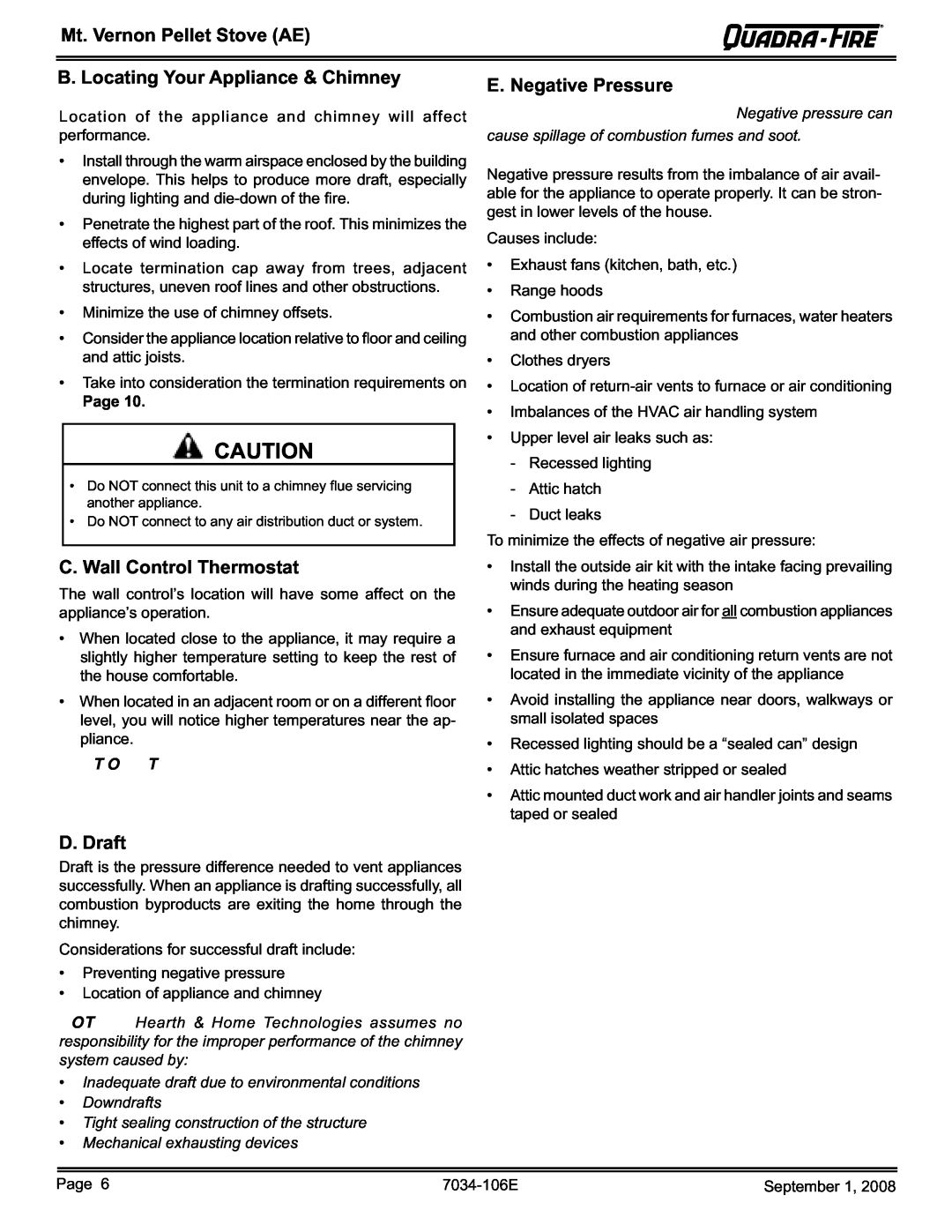
R
Mt. Vernon Pellet Stove (AE)
B. Locating Your Appliance & Chimney
Location of the appliance and chimney will affect performance.
•Install through the warm airspace enclosed by the building envelope. This helps to produce more draft, especially during lighting and
•Penetrate the highest part of the roof. This minimizes the effects of wind loading.
•Locate termination cap away from trees, adjacent structures, uneven roof lines and other obstructions.
•Minimize the use of chimney offsets.
•Consider the appliance location relative to floor and ceiling and attic joists.
•Take into consideration the termination requirements on
Page 10.
![]() CAUTION
CAUTION
•Do NOT connect this unit to a chimney flue servicing another appliance.
•Do NOT connect to any air distribution duct or system.
C. Wall Control Thermostat
The wall control’s location will have some affect on the appliance’s operation.
•When located close to the appliance, it may require a slightly higher temperature setting to keep the rest of the house comfortable.
•When located in an adjacent room or on a different floor level, you will notice higher temperatures near the ap- pliance.
T O T
E. Negative Pressure
Negative pressure can
cause spillage of combustion fumes and soot.
Negative pressure results from the imbalance of air avail- able for the appliance to operate properly. It can be stron- gest in lower levels of the house.
Causes include:
•Exhaust fans (kitchen, bath, etc.)
•Range hoods
•Combustion air requirements for furnaces, water heaters and other combustion appliances
•Clothes dryers
•Location of
•Imbalances of the HVAC air handling system
•Upper level air leaks such as:
-Recessed lighting
-Attic hatch
-Duct leaks
To minimize the effects of negative air pressure:
•Install the outside air kit with the intake facing prevailing winds during the heating season
•Ensure adequate outdoor air for all combustion appliances and exhaust equipment
•Ensure furnace and air conditioning return vents are not located in the immediate vicinity of the appliance
•Avoid installing the appliance near doors, walkways or small isolated spaces
•Recessed lighting should be a “sealed can” design
•Attic hatches weather stripped or sealed
•Attic mounted duct work and air handler joints and seams taped or sealed
D. Draft
Draft is the pressure difference needed to vent appliances successfully. When an appliance is drafting successfully, all combustion byproducts are exiting the home through the chimney.
Considerations for successful draft include:
•Preventing negative pressure
•Location of appliance and chimney
OT Hearth & Home Technologies assumes no responsibility for the improper performance of the chimney system caused by:
•Inadequate draft due to environmental conditions
•Downdrafts
•Tight sealing construction of the structure
•Mechanical exhausting devices
Page 6 | September 1, 2008 |
